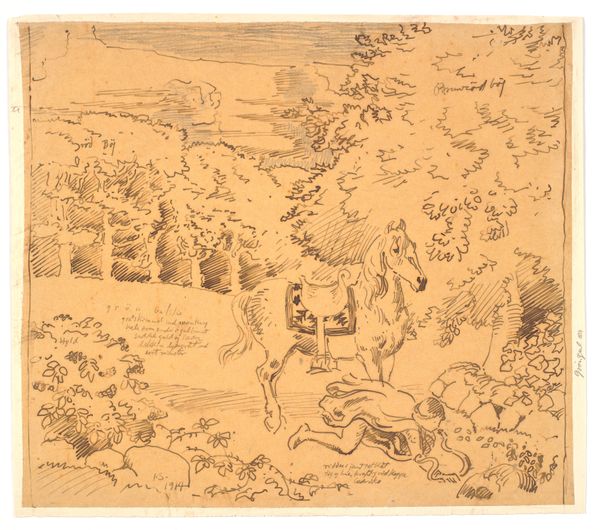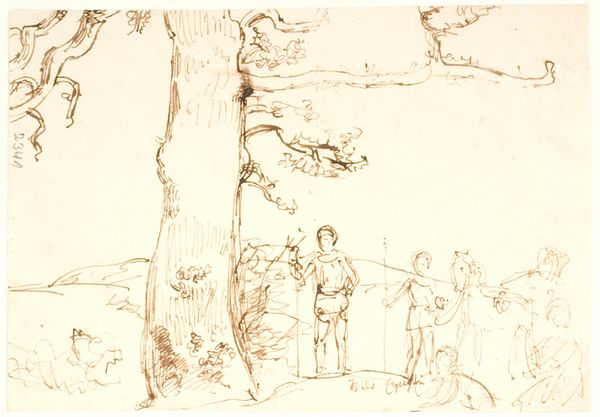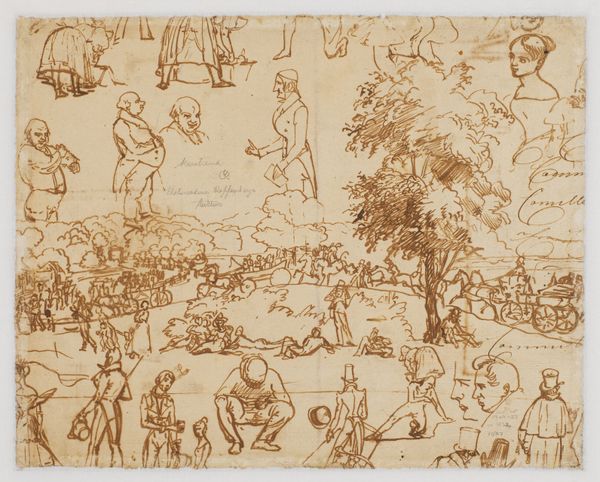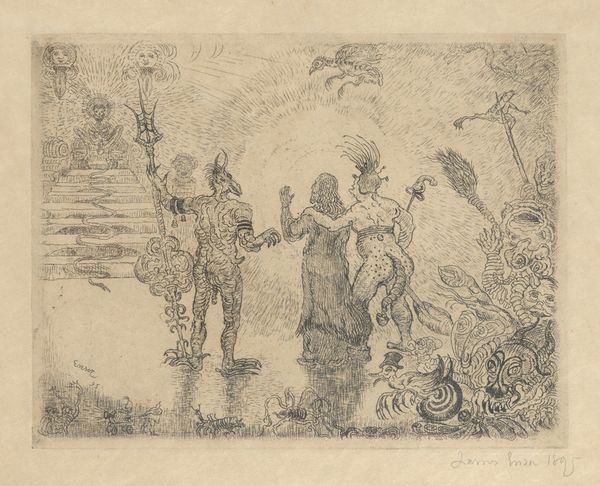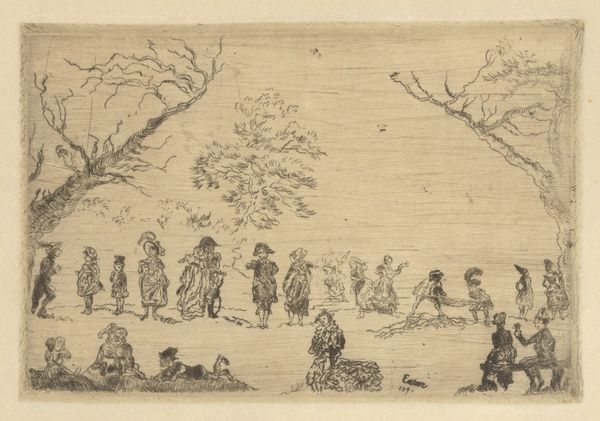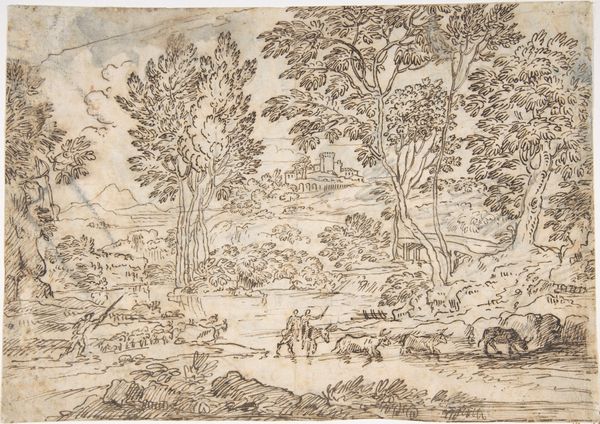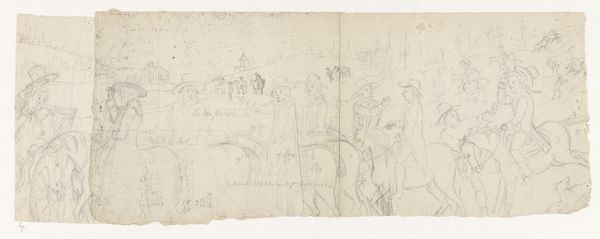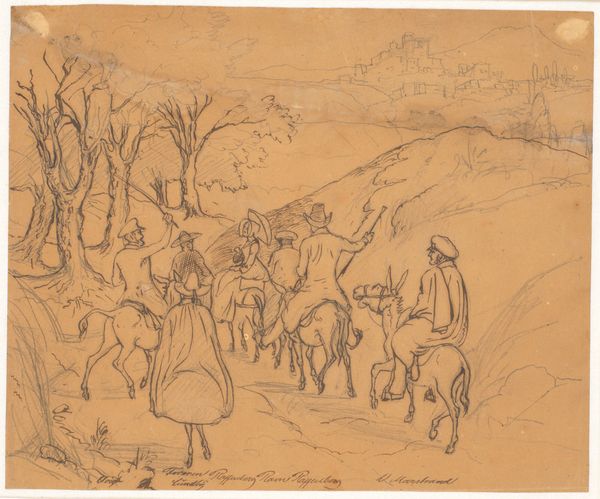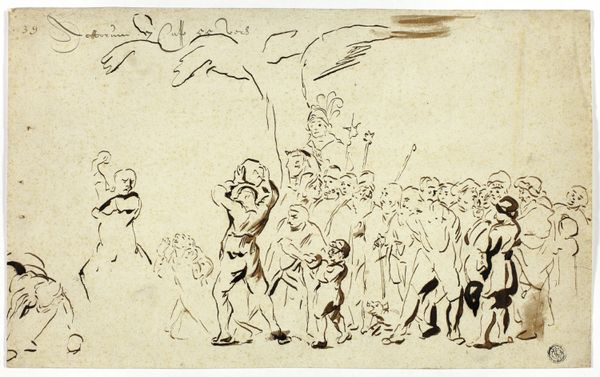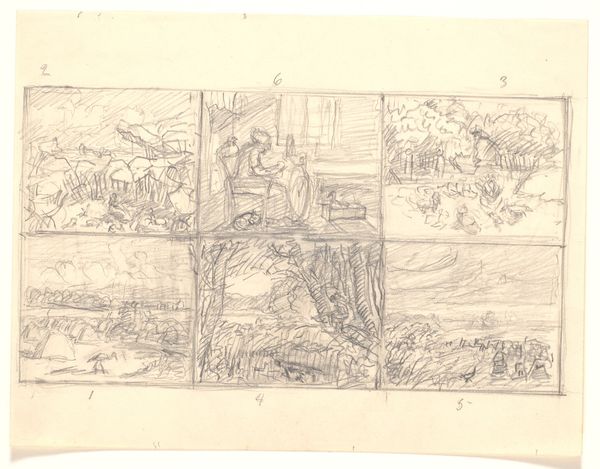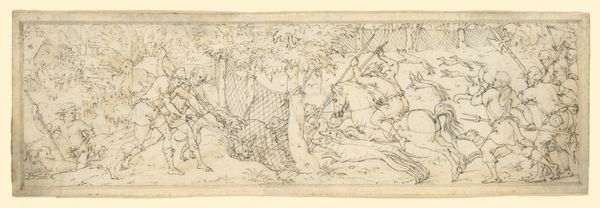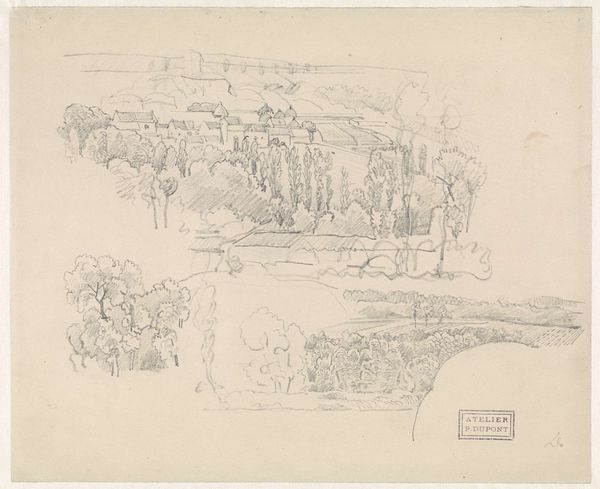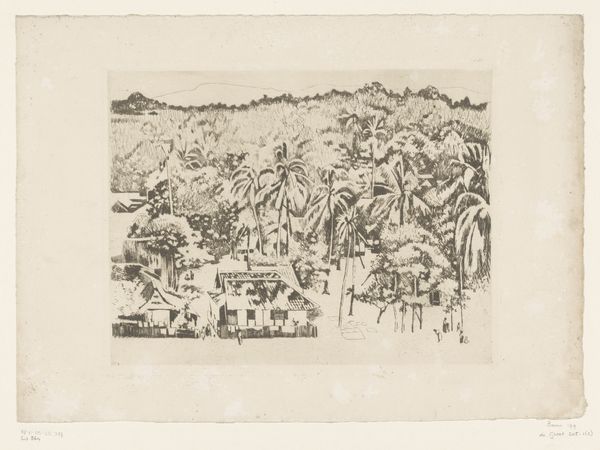
drawing, ink, pen
#
drawing
#
ink drawing
#
narrative-art
#
pen drawing
#
landscape
#
figuration
#
ink
#
pen
Editor: This pen and ink drawing from 1914 is called "Chalk with Folk Song Motif" by Joakim Skovgaard. I am immediately struck by its almost ephemeral quality. What story do you think the artist is trying to tell us through the penmanship of labor and the materials he employed? Curator: Well, if we examine Skovgaard's choice of ink and pen on paper, rather than, say, a grand oil painting, we have to consider the social context. The early 20th century witnessed the rise of industrialization impacting artists. Perhaps he’s deliberately choosing a less ‘precious’ medium. What do you make of the subject matter relating to folklore? Editor: It looks like some sort of clandestine meeting in the forest. There is a man, a woman, and a horse - all quite meticulously detailed - even more so than the background landscape which only includes a scattering of scribbled foliage, fence, and rocks. The artist really highlights the material realities of labor power through these simple figures in this scene. Does the fact that this artwork portrays what looks to be folk song add to the message or narrative? Curator: Absolutely. The "folk song motif" is key. It connects to the romantic nationalism of the time, an idealized vision of rural life and its associated crafts which, in this context, challenges the rapid social changes caused by industrial output. Even the chalk, perhaps acting as a material association here, recalls older ways of making. Could that also add to the art's ability to speak to the public? Editor: Yes, absolutely! Looking at this work from the lens of material production has broadened my perspective considerably, showing that the materials chosen reflect artistic message just as much as the subject matter itself. Thank you for shining light on the means through which this message of labor and social reform in art are displayed through commonality and rural nostalgia. Curator: My pleasure. Considering materiality allows us a more nuanced appreciation of art history's response to social transformations through production and consumerism as the basis of modern civilization.
Comments
No comments
Be the first to comment and join the conversation on the ultimate creative platform.
